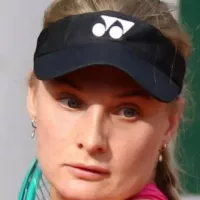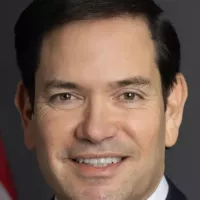A closer look at the defining struggles that shaped Dalai Lama's life and career.
The Dalai Lama is the title given to the head of the Gelug school of Tibetan Buddhism. The title, meaning "Holiness Knowing Everything Vajradhara Dalai Lama," was first bestowed upon Sonam Gyatso in 1578 by Altan Khan. Sonam Gyatso became the 3rd Dalai Lama, and the title was posthumously awarded to the first two tulkus in his lineage. The Dalai Lama lineage represents a significant figure in Tibetan Buddhism and, historically, held political influence.
1904: Escape the British invasion
In 1904, the 13th Dalai Lama was in exile to escape the British invasion.
1909: Escape the British invasion
From 1904–1909, the 13th Dalai Lama was in exile to escape the British invasion.
1910: Escape from a Chinese invasion
From 1910–1912, the 13th Dalai Lama was in exile to escape a Chinese invasion. After his return from exile in India and Sikkim during January 1913, he assumed control of foreign relations and dealt directly with foreign officials.
1912: Escape from a Chinese invasion
From 1910–1912, the 13th Dalai Lama was in exile to escape a Chinese invasion. After his return from exile in India and Sikkim during January 1913, he assumed control of foreign relations and dealt directly with foreign officials.
1912: Upholding Tibetan independence
From 1912 to 1950, the 13th Dalai Lama upheld de facto Tibetan independence from China.
1912: Declaration of Independence by the 13th Dalai Lama
In 1912, following the collapse of the Qing dynasty, the 13th Dalai Lama declared that Tibet's relationship with China had ended and proclaimed Tibet's independence.
1912: Collapse of the Qing dynasty
In 1912, following the collapse of the Qing dynasty, the government in Tibet was reconstituted with the Dalai Lama presiding over a Kashag, reinvesting him with temporal power.
1913: Publication of the Tibetan Declaration of Independence
In 1913, the Great Thirteenth Thubten Gyatso published the Tibetan Declaration of Independence for the entirety of Tibet.
1949: Nepal references Tibet as an independent state when submitting an application to join the UN
In 1949, the Kingdom of Nepal referenced Tibet as an independent state when submitting an application to join the UN.
November 1950: Enthronement of the 14th Dalai Lama
On 17 November 1950, the 14th Dalai Lama was formally enthroned during the Battle of Chamdo with the People's Republic of China.
1950: Upholding Tibetan independence
From 1912 to 1950, the 13th Dalai Lama upheld de facto Tibetan independence from China.
1951: Ratification of the Seventeen Point Agreement with China
In 1951, the 14th Dalai Lama ratified the Seventeen Point Agreement with China, which outlined the terms for Tibet's incorporation into the People's Republic of China.
1951: Pressure to accept the Seventeen Point Agreement
In 1951, the Dalai Lama and the Tibetan government were pressured into accepting the Seventeen Point Agreement for the Peaceful Liberation of Tibet.
April 1959: Issuance of statement regarding the Seventeen Point Agreement
On 18 April 1959, the Dalai Lama issued a statement that in 1951, the Dalai Lama and the Tibetan government were pressured into accepting the Seventeen Point Agreement for the Peaceful Liberation of Tibet.
1959: Seeking refuge in India
Following the failed 1959 Tibetan uprising, the 14th Dalai Lama sought refuge in India, where Prime Minister Jawaharlal Nehru allowed him and the Tibetan government officials to enter. The Dalai Lama has since lived in exile in McLeod Ganj, Himachal Pradesh.
1959: Escape from Lhasa during the Tibetan uprising
In 1959, Tenzin Gyatso, the 14th Dalai Lama, escaped from Lhasa during the Tibetan uprising and went into exile in Dharamshala, India.
1959: 14th Dalai Lama fled to India
In 1959, the 14th Dalai Lama fled to India, marking the end of the Dalai Lama lineage's continuous rule over Tibet for 317 years.
1959: Revocation of the Seventeen Point Agreement
In 1959, the 14th Dalai Lama revoked the Seventeen Point Agreement with China.
1959: Reinstatement of the Kashag and National Assembly
Until 1959, the Kashag and the Tsongdu or National Assembly were reinstated, and, presided over by a Dalai Lama or his regent, ruled without further interruption.
1974: Rejection of Tibetan independence
In 1974, the 14th Dalai Lama rejected calls for Tibetan independence, shifting away from supporting the Tibetan independence movement.
1995: Selection of the 11th Panchen Lama and subsequent abduction
In 1995, the Dalai Lama chose the 11th reincarnation of the Panchen Lama without using the Golden Urn, while the Chinese government insisted on its use, leading to two rival Panchen Lamas. Gedhun Choekyi Nyima, chosen by the Dalai Lama, was abducted by the Chinese government shortly after and has not been seen in public since 1995.
2005: Agreement that Tibet is part of China
Since 2005, the 14th Dalai Lama has publicly agreed that Tibet is part of China and no longer supports separatism.
September 2007: Chinese government regulation on high monks
In September 2007, the Chinese government declared that all high monks, including the selection of the 15th Dalai Lama, must be government-approved after the death of Tenzin Gyatso. The Dalai Lama alluded to a possible referendum to determine his successor.
2014: Tibet wants to be part of China
In 2014, the Dalai Lama said that Tibet wants to be part of China but China should let Tibet preserve its culture and script.
2016: Tibet wants to be part of China
In 2016, the Dalai Lama said that Tibet wants to be part of China but China should let Tibet preserve its culture and script.
Mentioned in this timeline

Barack Obama the th U S President - was the...
The United States of America is a federal republic located...
India officially the Republic of India is a South Asian...
China officially the People's Republic of China PRC is an...
Nepal is a landlocked country in South Asia predominantly located...

September is the ninth month of the year in the...
Trending
3 months ago Alexander Bublik at Shanghai Masters 2025: Predictions and Betting Odds
2 months ago Body of missing Hubbard hunter, Devon Dobek, recovered from Mount Hood National Forest.
1 month ago Battery prices decreased, electric grid more reliable: Storage industry crushes 2025 goals.
Rapha l Collignon is a Belgian professional tennis player who has achieved a career-high ATP singles ranking of world No...

6 months ago Dayana Yastremska advances to Hamburg quarterfinal, her first on clay since 2022.
1 month ago Frontier Airlines Introduces Changes, New Routes, and Affordable Travel Options for Passengers.
Popular

Stranger Things created by the Duffer Brothers is a popular...

XXXTentacion born Jahseh Dwayne Ricardo Onfroy was a controversial yet...

Kelsey Grammer is an accomplished American actor producer and singer...

Candace Owens is an American conservative political commentator and author...

Bernie Sanders is a prominent American politician currently serving as...

Marco Rubio is an American politician attorney and diplomat He...
